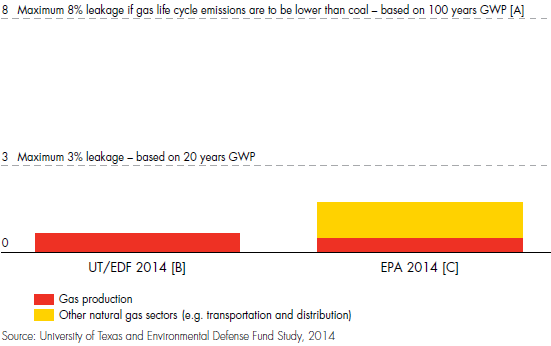The production of natural gas can result in the release of methane into the atmosphere, known as fugitive methane emissions. There are concerns that tight gas production could increase these emissions. Methane is a very powerful greenhouse gas (GHG), 30 times more potent than CO2 over 100 years and even higher over shorter timescales. Therefore, any potential increase in methane emissions must be treated seriously.
We implement technologies that prevent methane emissions during tight gas production. This includes a system known as green completion that captures emissions of methane, volatile organic compounds and other potential pollutants from wells. Infrared cameras are used at our sites to detect gas leaks.
We are taking part in studies that assess the sources of fugitive methane emissions and to find ways to further reduce emissions. A 2014 study by the University of Texas and the Environmental Defense Fund (EDF) assessed whether the production of tight gas is leading to an increase in methane emissions. Nine energy companies, including Shell, took part. The study’s results indicated that methane emissions from gas production in the USA are less than 0.4%.
When gas is used for power generation, it has lower total GHG emissions than coal so long as methane leakage is less than 3% to 8%, depending on the global warming potential assumed. The US Environmental Protection Agency (EPA) estimates that total methane leakages in the life cycle of the gas supply chain are slightly above 1% – well below these thresholds. This takes into account methane leaks during gas processing and transmission for power generation.
We are also involved in a joint study with the US National Oceanic and Atmospheric Administration (NOAA) and the EDF to assess methane emissions on the Barnett Shale operations in north Texas.
Critical thresholds for methane leakage methane emissions as % of production

[A] GWP: Global Warming Potential.
[B] UT/EDF: University of Texas and the Environmental Defense Fund.
[C] EPA: US Environmental Protection Agency.







